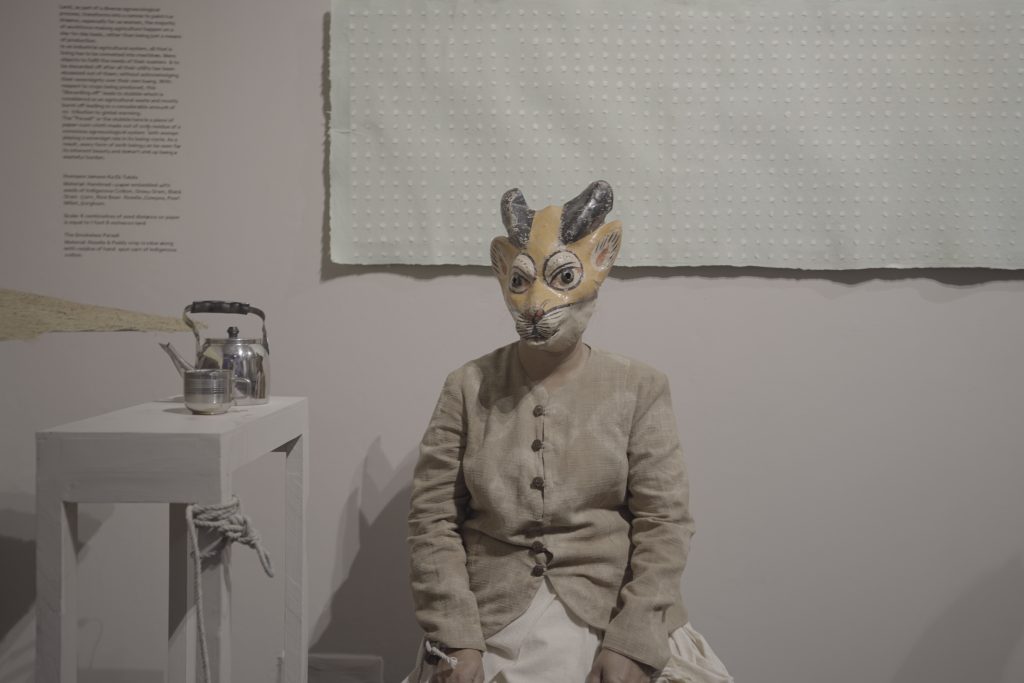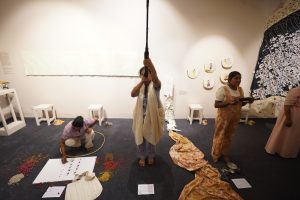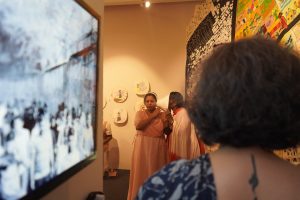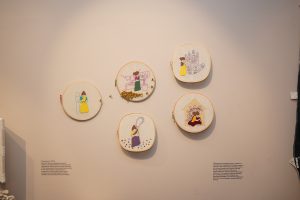Women wearing animal heads were the attraction in a performance called “Cotton Stainers” at Khoj Studios. The performance was strong and asked numerous questions about women empowerment and the difficulties they face every day in Indian society. The performance consisted of four different women taking on different concepts but with a common theme of examining the status of women in our social strata at present. Shweta founded the Village Art Project in Paradsingh, Madhya Pradesh. The project works with women to sow, weave and sew sustainable clothing. The cotton stainer is an infamous agricultural pest that leaves stains on cotton plants, but Shweta sees these scars as anecdotes from nature and part of the ecosystem.
It’s a space that is run by women in Paradsinga, so that it becomes a platform of expression for their stories and concerns through sustainable clothing. Right from the sowing of cotton to spinning it into yarn to hand-weaving into the fabric to hand-stitching into final garments, was all done by the women in this space. Stains and cloth commonly don’t go with each other. Most people don’t like to wear stained clothes. But each stain is actually an anecdote — a story that makes the cloth live and its evolving nature build up its character over time.
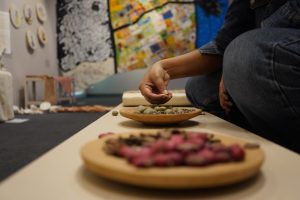 Gauri (one of Khoj’s representatives) told us about the performance, “Cotton Stainers is an exhibition to mark the culmination of a four-year program of one of our residency programs. Khoj moved to Khirki in 2012, and we started this local residency program. Shweta was part of our residency, and did work for the women’s community. She always talks about her community and I feel some sense of responsibility in her work. Themes such as Farming and Food have always been close to her. Her process is very community based. Her art is not transactional; Her art is collaborative. It is about the contribution of women.”
Gauri (one of Khoj’s representatives) told us about the performance, “Cotton Stainers is an exhibition to mark the culmination of a four-year program of one of our residency programs. Khoj moved to Khirki in 2012, and we started this local residency program. Shweta was part of our residency, and did work for the women’s community. She always talks about her community and I feel some sense of responsibility in her work. Themes such as Farming and Food have always been close to her. Her process is very community based. Her art is not transactional; Her art is collaborative. It is about the contribution of women.”
The performance included titles such as ‘Freedom Chai – The Jacket’, which spoke about the contribution of women to household chores. She works whole day and her contribution is ignored and not appreciated, they don’t get a chance to even enjoy a cup of tea. Tea was stained through the fabric to make the jackets to acknowledge unpaid labour. Another was ‘Shoot to Heel – The Dress’, where she tried to interrogate sexual violence and how women were taught to remain silent about it. This work is about creating a safe space for women where they carry their wounds in a dress, it creates a bullseye which they shot with air rifles as an act of catharsis, not to kill, but rather to heal. Another one was ‘Solidarity Ties – The Dungarees’, where they talk about domestic violence against women that had become taboo. They stitched together a fabric that breaks the silence of women. The last was ‘Mothers Anonymous – The Dress’, where the concept of men’s involvement with women at childbirth was explored. As it is a healthy process to attend with the partner, women made this dress by knitting the thread after a conversation about the topic.
There is no doubt that this work uniquely expresses the unheard voices of women, and also creates an understanding that acknowledges the contribution of women to the development of society.

